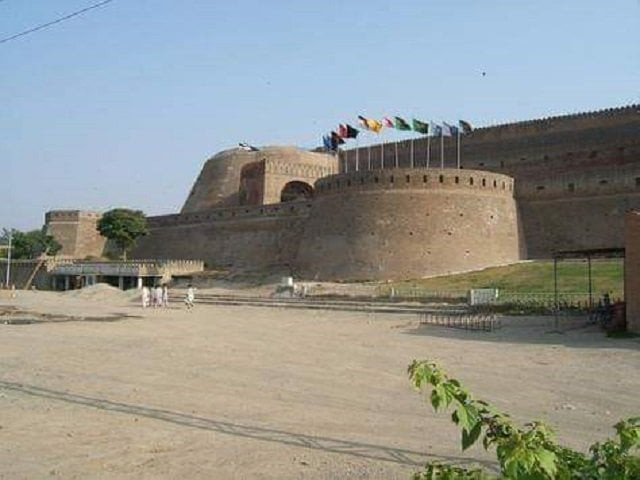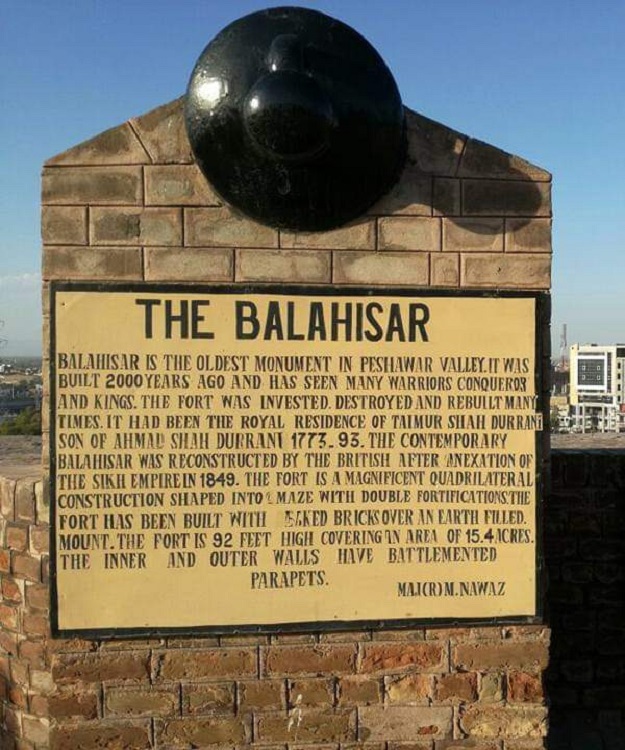A majestic bulwark on Peshawar’s skyline
Centuries-old garrison and current FC headquarters may soon open to public every day of the week

Centuries-old garrison and current FC headquarters may soon open to public every day of the week. PHOTO: EXPRESS
Since 1948, Bala Hissar has served as the headquarters of the Frontier Corps, open to the public in recent years only on weekends. But now, the Khyber-Pakhtunkhwa government wants to convert the ancient fort from a paramilitary garrison to the face of province’s tourism industry.
 PHOTO: EXPRESS
PHOTO: EXPRESS“Just before Eid, the K-P archaeology department put forth a recommendation before Prime Minister Imran Khan to turn Bala Hissar into a tourist attraction after carrying out some restoration work,” K-P Director of Archaeology Dr Abdul Samad told The Express Tribune.
“We recommended the move in light of the fort’s importance to global history,” he said. “The prime minister has already indicated he agrees with the idea to allow tourists to visit the landmark easily on any day of the week.”
In Peshawar, 200-year old Khan Klub awaits govt’s attention
According to Dr Samad, Rs500 million have been set aside in the 2019-20 budget to restore various historical landmarks in K-P, including Bala Hissar. A team specialising in restoration of historical structures has already visited Peshawar thrice on the premier’s directives, he said.
The team, which includes Walled City of Lahore Authority (WCLA) Director General Kamran Lashari and WCLA Conservation Director Najamul Saqib, has collected data from Bala Hissar, Mahabat Khan Mosque, Sethi House, Heritage Trail and other sites in Peshawar, and will present a report to the prime minister soon.
“The K-P archaeology department and the WCLA team will the work jointly to restore the grandeur of Peshawar’s historical structures,” Dr Samad said. He added that the department has also recommended procuring 530 kanals in Shaks paid for equally by the FC and K-P government once the fort has been transferred by the paramilitary force.
 PHOTO: EXPRESS
PHOTO: EXPRESS“We were left astonished by Peshawar’s heritage, its beautiful fort and other old structures. These can attract tourists from all over the world,” WCLA Conservation Director Saqib told The Express Tribune.
“Next week, we will send our preliminary report on improving Bala Hissar, Gor Gathri and Sethi House, and joining Bala Hissar, Yadgar Chowk and Sarafa Bazaar to the Heritage Trail to the prime minister,” he said. “Our plan is to initiate a one-window operation for Peshawar’s heritage sites which will look after their embellishment, cleanliness, security and other aspects.”
That said, Saqib pointed out the difficulty in initiating renovation and restoration work on a massive scale due to security concerns. He added that encroachments on the Heritage Trail have popped up once again as well.
For now, Bala Hissar remains open to the public on weekends. Sunday is a particularly busy, according to FC sources, when as many as 500 tourists visit the fort.
Withstanding the sands of time
Built on a mound in the exact centre of Peshawar, the exact origins of Bala Hissar are lost to time.
The earliest mention of a structure matching the fort is made by Chinese traveller Hiuen Tsang and dates to 630 AD. In his account of his visit to Peshawar, Tsang makes reference to a royal residence inside a walled enclosure separate from the rest of the city, which he describes as unfortified.
The name Bala Hissar – Dari for ‘elevated fort’ – was given to the structure by Afghan king Timur Shah Durrani, who made Peshawar the winter capital of the Durrani Empire.
Sabuktigin, the founder of the Ghaznavid Dynasty, camped in the fort with 10,000 horsemen when he conquered Peshawar in 988 AD, as did Shahabuddin Ghauri in 1179.
Afghan forces destroyed the original fort after defeating Babur, the Mughal ruler recorded himself in Tuzk-e-Babari. It was restored by his son Humayun upon restoring Mughal rule in the Subcontinent.
Bala Hissar was destroyed once again in 1834, this time by the forces of the Sikh Empire, but was rebuilt, however, on the orders of Maharaja Ranjit Singh. His picture now hangs at the fort following a request from K-P’s Sikh community to the FC.
The structure of Bala Hissar visible today is credited to the British, who took over the fort when they captured areas of modern-day Punjab and K-P after defeating the Sikh Empire in 1849. The British would go on to use it as a military garrison for nearly a century, until Pakistan came into being.
In 1948, the FC headquarters were set up inside the historic fort and that is the purpose the structure is serving till date. A museum featuring antique weapons, uniforms and other equipment has also been established at Bala Hissar. In recent years, the photographs of FC personnel martyred in the war against terror have been put up for display as well.













COMMENTS
Comments are moderated and generally will be posted if they are on-topic and not abusive.
For more information, please see our Comments FAQ